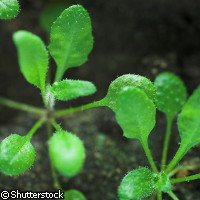Key gene helps plants adapt to climate change
A group of researchers from the UK has discovered through genetic experiments how plants control their development through their response to changing temperatures. The research team, which received funding from the European Research Council (ERC) and the John Innes Centre, studied genes from the Arabidopsis plant to ascertain which genes regulate temperature response and how they can be adapted to increasing temperatures due to climate change. Research published in the journal Cell has found that plants have a built-in 'thermometer gene' that they use to control their growth and development. This discovery could lead to new ways of breeding crops that are more resistant to climate change. Many plant growth cycles are already being greatly affected by climate change, which is causing redistribution of species throughout the world and worrying changes of traditional growth and flowering patterns. Plants are extremely sensitive to temperature, which controls their growth, flowering and fruiting cycles. They can sense temperature differences of only 1°C and are subject to many changes and extremes of temperature throughout the seasons, from night to day and from spring to winter. To decide when they need to grow and when they need to conserve energy, they sense the air temperature around them and control their growth accordingly. How they do this has always been a mystery. Now a team of researchers from the John Innes Centre, part of the Biotechnology and Biological Sciences Research Council (BBSRC) in the UK, has lifted the lid on this mystery and found the reasons for plants' ability to control their growth: they have a built-in temperature thermometer that helps them regulate their growth levels. The researchers studied all the genes in a variety of the plant Arabidopsis (a type of cress) to find out which genes are turned on by warmer temperatures. They then connected one of these genes to a luminescence gene from another plant to create a plant that gives off light when the temperature rises. They did this to screen the plants for mutants that no longer sense temperature fluctuations. One mutant plant lost its ability to sense the correct temperature, giving off luminescence even when the temperature was cold. 'It was amazing to see the plants,' said Dr Vinod Kumar, a member of the research team. 'They grew like plants at high temperatures even when we turned the temperature right down.' The defect in this mutant plant allows it to affect the way that a variant of a histone protein works. Histones are the structural proteins of chromosomes that bind to DNA, help give chromosomes their shape, and help control which genes are 'switched on'. When the histone is no longer incorporated into plant DNA, the plant expresses all its genes as if the temperature were high even if it is not. This proved to the research team that histone is the main temperature regulator of plants. The histone variant controls a gene that has helped plant species adapt to climate change by speeding up their flowering pattern. The results of the research will help scientists to predict how different plants will adapt and respond to further climate change patterns. 'We may be able to use these genes to change how crops sense temperature,' said Dr Wigge. 'If we can do that, then we may be able to breed crops that are resistant to climate change.'
Countries
United Kingdom



